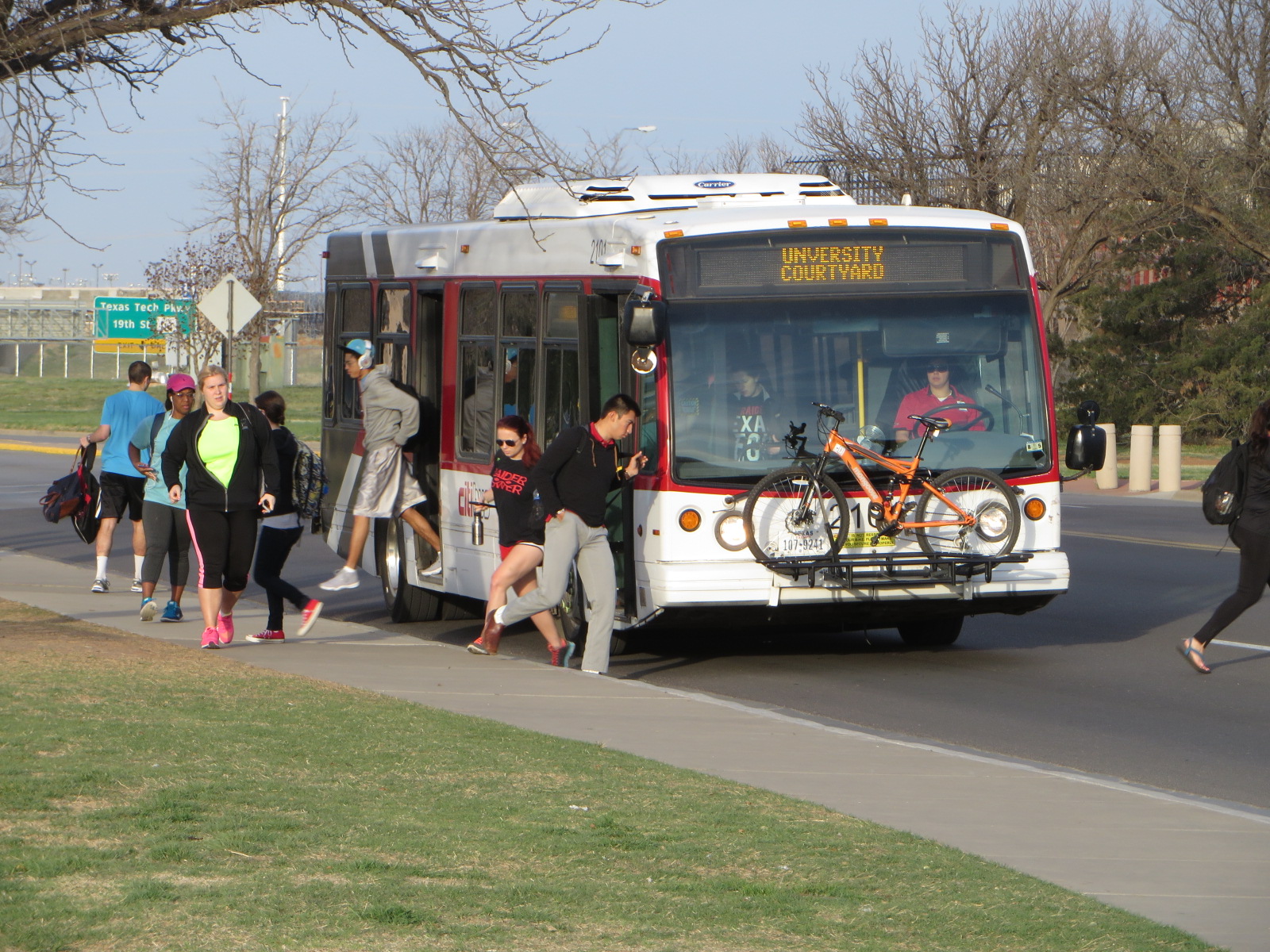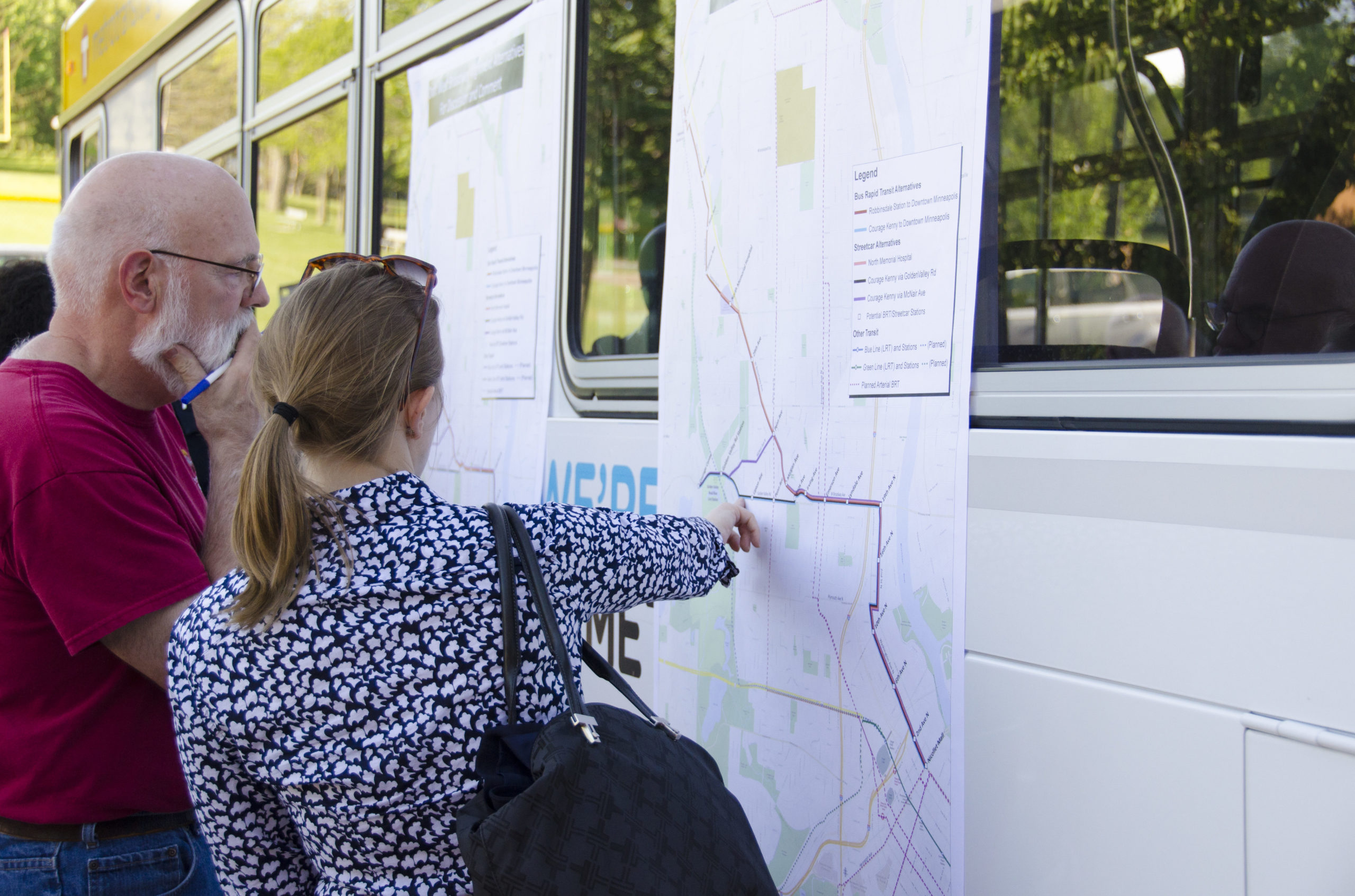Over a year into the COVID-19 pandemic, transit agencies have weathered unprecedented changes to travel patterns that have upended business as usual. Like many of us who adjusted to a work-from-home reality or new conceptions of “essential” trips, transit providers have needed to be flexible, reliable, and resilient.
Large declines in ridership, combined with the emergent and evolving conversations around public safety, economic uncertainty, and racial justice, have highlighted the need for transit to serve as an engine of equity–filling gaps in the transportation network for the people who need it most.
As the country emerges from the pandemic, vaccines become readily available, and many people begin to return to the office, transit agencies are reimagining their futures to invest in high-quality services that provide more than just a commute. Supported by federal funding and local engagement, transit is building toward a brighter tomorrow.
How did COVID-19 affect transit agencies and their riders?
2020 caused an immense drop in ridership across U.S. transit systems. As transit agencies adjusted to the pandemic, many systems reduced service and/or restricted travel to essential trips.
In Minnesota, Metro Transit and nearby transit providers saw a loss of over 44 million annual trips, a 53 percent decline from the region’s 2019 total. Ridership and service have recovered modestly from a low in May 2020 but are still well below 2019 figures.
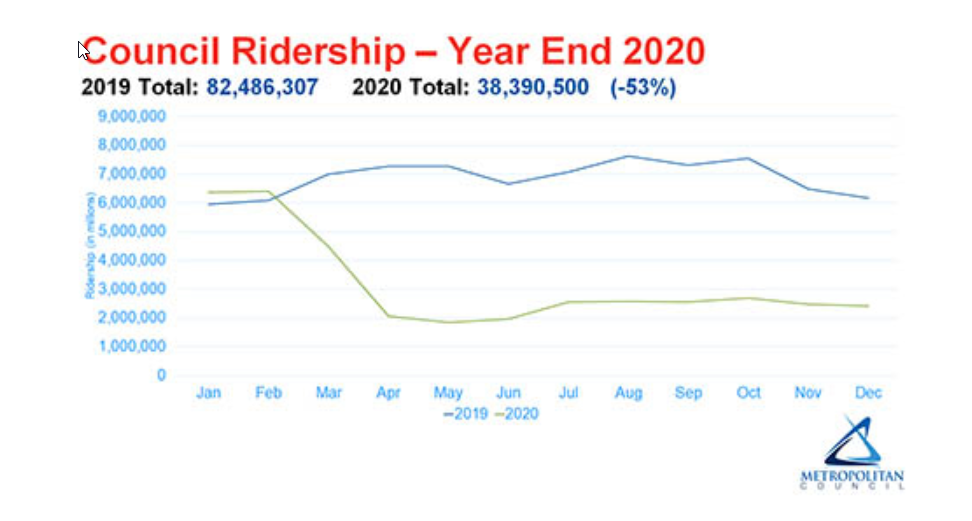
In Chicago, the Regional Transportation Authority system (encompassing CTA, Metra, and Pace) saw a decline of 71 percent from March 2020, to March 2021. These losses were not distributed equally: Commuter bus and rail services fell more dramatically, while ridership on local buses and demand-response service declined by less than 50 percent.
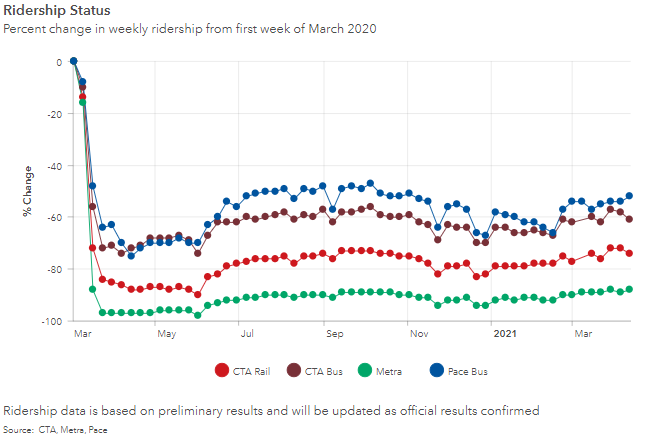
Recent surveys have highlighted the equity impacts of COVID-19 on transit riders. People who have continued to ride transit during the pandemic are more likely to be of lower incomes than lapsed riders. This reflects national disparities in the ability to work from home: lower-income workers are more likely to work in “essential” occupations that require an on-site presence.
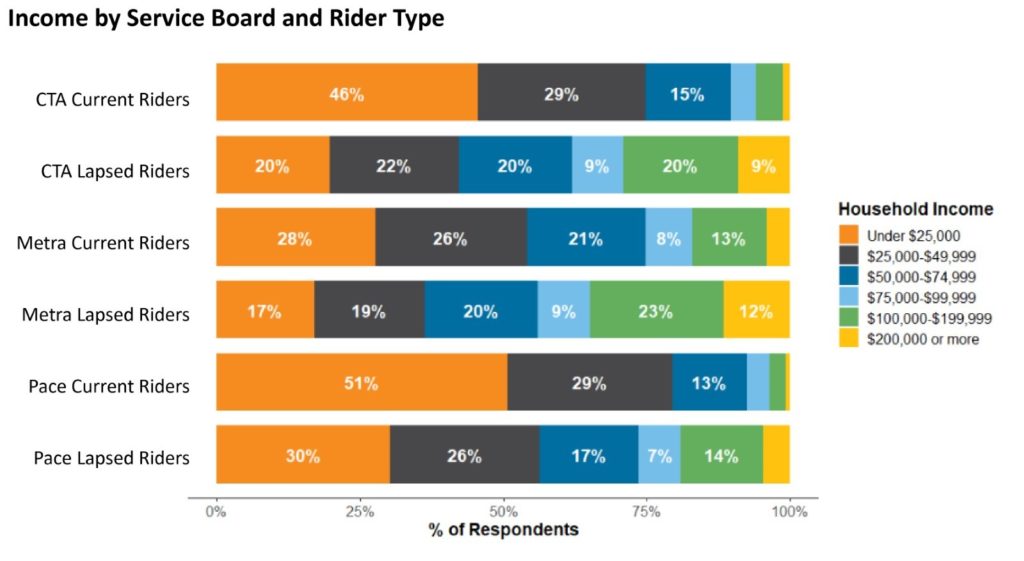
Federal assistance (through the CARES Act and CRRSAA) enabled transit to continue operating during the pandemic. The American Rescue Plan delivered over $30 billion in additional funds for transit, including grants for planning, capital investment, and intercity bus service.

How does COVID-19 change how we plan for the future?
The impact of the COVID-19 pandemic highlighted the importance of safety, equity, and resilience, both within transit agency operations and within the broader community. During the pandemic, many transit agencies made changes to better meet riders’ needs:
- Transit agencies immediately invested in health and safety, including driver face shields, improved ventilation, and robust cleaning and sanitizing practices.
- Larger transit agencies, including Metro Transit, reallocated high-capacity buses to facilitate social distancing. Many also limited service to essential trips.
- Some providers, including Green Bay Metro, have expanded the scope of on-demand transit, including by establishing microtransit pilot programs.
- Many transit agencies have invested in new rider communication technologies, including real-time vehicle crowding information.
- Nearly every city has seen transit vehicles provide essential community services, such as food delivery, transportation for healthcare workers, and rides to vaccination sites.
As agencies plan for recovery, many are surveying their customers to better understand rider priorities and respond accordingly. Planning for service expansion projects continues, aided by recent momentum toward more robust federal transit funding.
- Major rail and BRT projects are advancing in many regions; some projects even accelerating due to reduced traffic or construction conflicts.
- Downtown commutes have become less central to overall travel patterns, offering opportunities to rebalance service toward neighborhood needs.
- To reverse ridership losses, many transit agencies are focusing service improvements in areas where people are most reliant on transit — including in low-income and minority communities that have been most impacted by COVID-19.
Moving forward, SRF is committed to helping transit agencies plan for a safe and equitable return to normal. Our team of professionals is ready to collaborate, innovate, and engage to deliver transit improvements that meet this moment – and the challenges of tomorrow.
SRF’s Transit Practice
SRF’s Transit Practice has a strong reputation for delivering people-focused planning, design, and operation of transit systems through a collaborative and inclusive approach. Our portfolio includes a diverse range of clients across the United States, with significant work in the Midwest and North Carolina.
Meet the Authors

Shawn Combs Walding, PE

Matthew Stegeman


